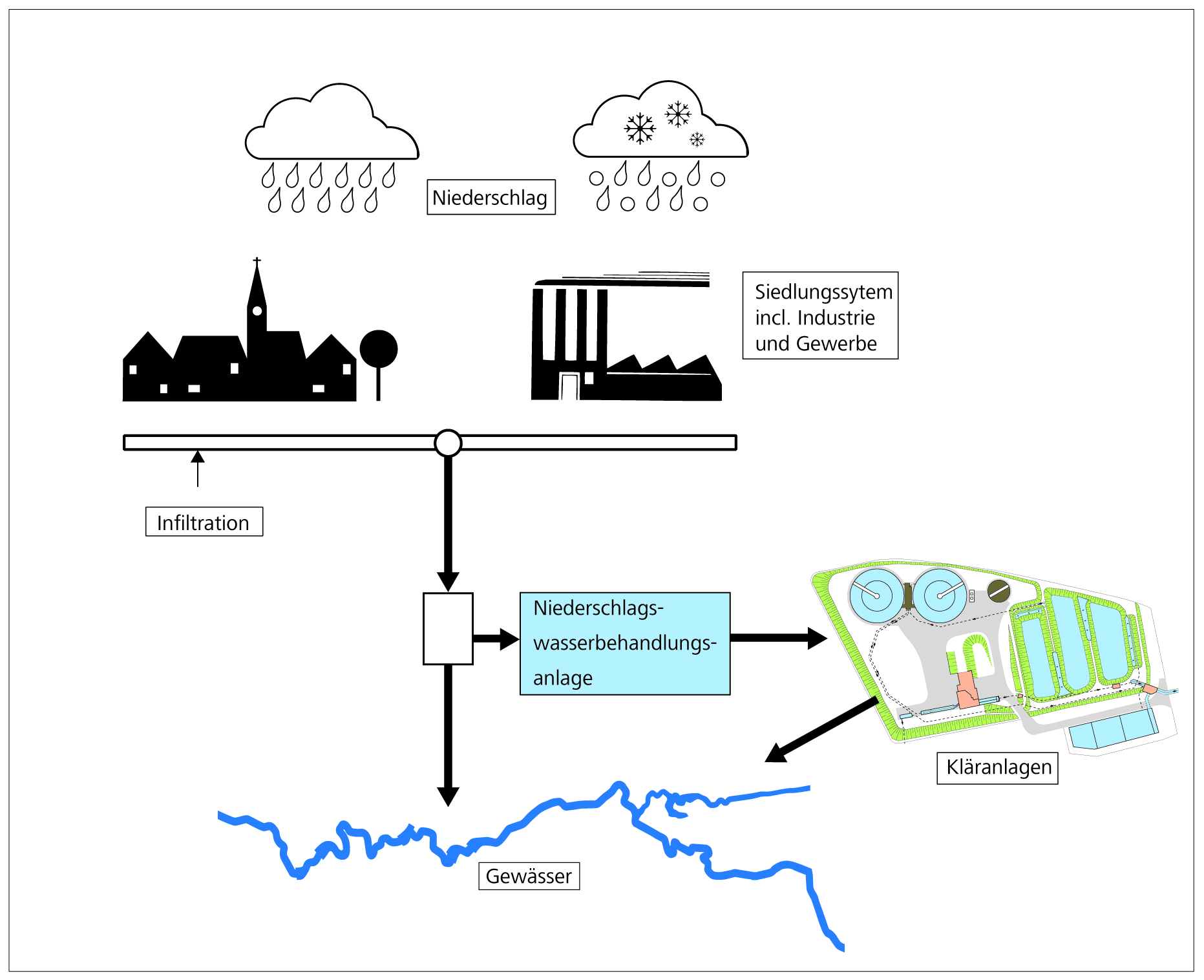Integral drainage planning (IEP)
With its integral drainage planning (IEP), the Ruhrverband aims at optimising settlement drainage in the Ruhr catchment area from an economic as well as an operational perspective. This new tool provides a comprehensive analysis of the interaction between the sewer system, rainwater and sewage treatment, and the recipient water body.
Integral drainage planning involves five steps:
- Measuring programme in the sewer system including an analysis of extraneous water infiltration followed by identification of suitable rehabilitation measures;
- Ecological assessment of effluent discharge points within the catchment area;
- Evaluation of operational data from rainwater treatment facilities;
- Analysis of the function of sewage treatment plants followed by identification of strategies for improvement;
- Development of a rainwater run-off model to optimise drainage in an entire settlement area.
The data thus gathered helps to critically evaluate additional water management measures in a settlement area and forms the foundation for improving the drainage system. Thanks to this integrated approach, it is now possible to analyse the correlation between various partial drainage systems as well as the real operational data from both rainwater and sewage treatment plants. Suitable strategies for improvement are developed using a calibrated rainwater run-off model which allows a real representation of run-off and overflow in the sewer system and, where applicable, in the body of water. IEP helps to improve operating performance which, in turn, helps to considerably reduce the quantity of contaminated discharge, thereby preventing negative effects on the ecological quality of the water body. Moreover, it helped save considerable costs when stormwater tanks and additional rainwater treatment facilities were built in the past.









